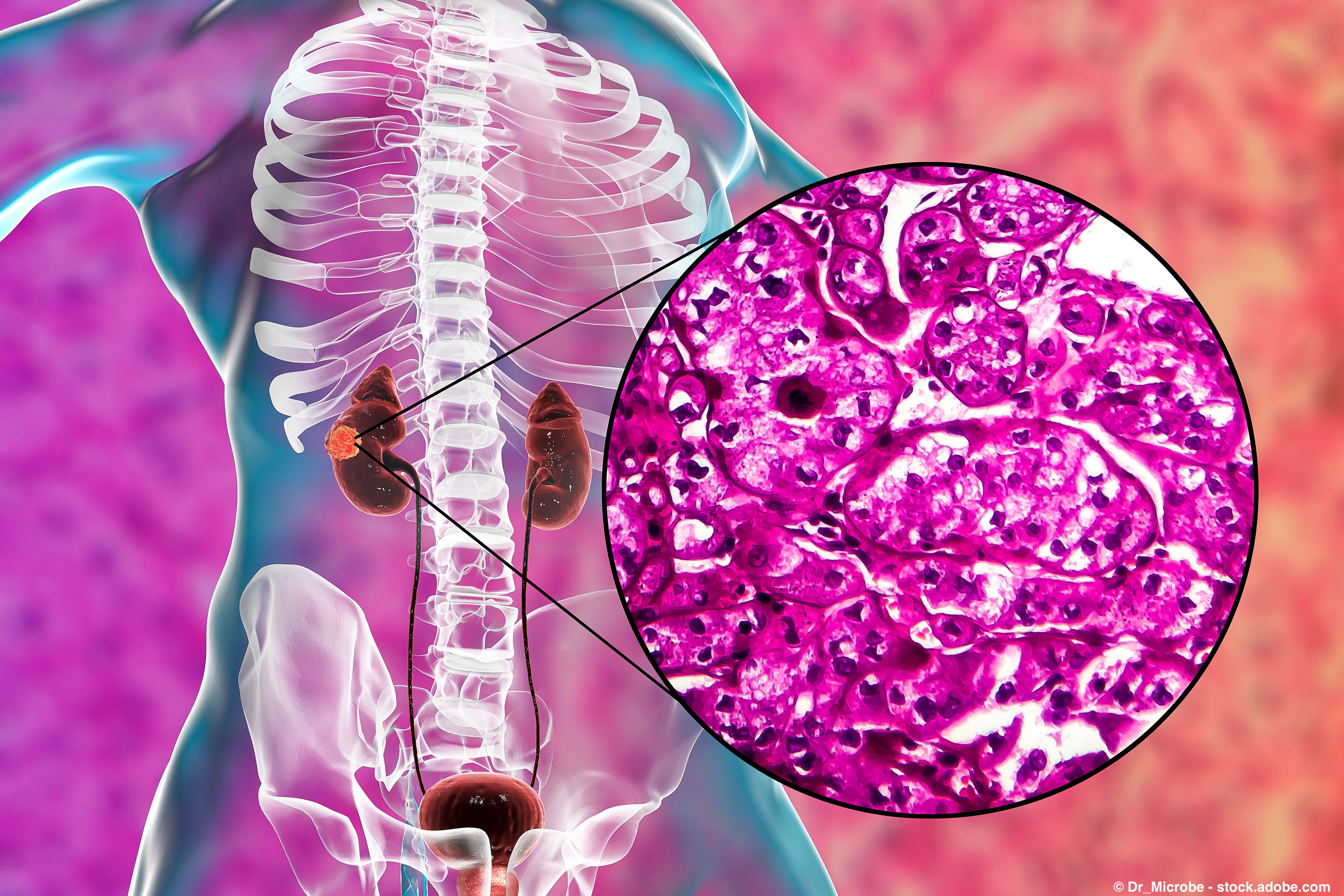Article
Zenocutuzumab ‘Offers Potential New Standard of Care’ for NRG1-Positive Solid Cancers
Author(s):
With no approved therapies for NRG-1 cancers, zenocutuzumab offers a promising treatment option for this patient population.
Zenocutuzumab (MCLA-128) had anti-tumor properties in multiple advanced, NRG1-positive solid cancers, and had a well-tolerated side effect profile, according to findings from a phase 1/2 clinical trial presented at the 2022 ASCO Annual Meeting.
At a median follow-up of 6.3 months, the bispecific antibody (a type of drug that links up cancer cells with the T cells that can kill them) elicited an investigator-assessed objective response rate of 34% among all patients analyzed (79 patients), with a median time to response of 1.8 months, and a median duration of response of 9.1 months.
“There are currently no approved therapies targeting NRG1-positive cancer, and zenocutuzumab offers a potential new standard of care,” Dr. Alison M. Schram, a medical oncologist at Memorial Sloan Kettering Cancer Center, said in a presentation on the data.
Chromosomal rearrangements involving NRG1 are rare genetic features that, if present, can play a role in many cancer types, and are enriched in pancreatic and lung cancers, according to Schram. In lung cancer, NRG1 fusions are linked with poor prognosis, lower response rates to standard chemotherapy and immunotherapy, and shorter overall survival. Zenocutuzumab has been shown to have efficacy in NRG1 fusion–positive preclinical models spanning tumor histologies.
In January 2021, zenocutuzumab was granted a fast-track designation from the Food and Drug Administration (FDA) for use in patients with metastatic solid tumors harboring NRG1 gene fusions that had progressed on standard-of-care treatment.Previously, in June 2020, the FDA granted zenocutuzumab an orphan drug designation for the treatment of patients with pancreatic cancer.
The global, open-label, multicenter, phase 1/2 trial enrolled patients with locally advanced, unresectable or metastatic solid tumors that were NRG1 positive. To be eligible for enrollment, patients must have been at least 18 years of age, have been previously treated with or unable to receive standard therapy, and have an ECOG performance status (which measures on a scale of 1-5 patients’ ability to perform daily functions) ranging from 0 to 2.
Study participants received intravenous zenocutuzumab at 750 mg, given every two weeks, until disease progression. Moreover, tumor assessments were conducted every eight weeks.
The primary end point of the trial was overall response rate by RECIST v1.1 criteria and per investigator assessment. DOR, ORR per central review, safety, pharmacokinetics (how a drug moves throughout the body) and assessment for antidrug antibodies served as secondary end points.
At a data cutoff date of April 12, 2022, a total of 110 patients were enrolled, and 83 patients met the predefined criteria for the primary analysis population.
“The primary analysis population included those who had at least one dose of zenocutuzumab, had the opportunity for greater than or equal to six months of follow-up, and met criteria for the primary efficacy population,” Schram explained.
Among the 83 patients, the median age was 59 years (range, 22-84), and 59% were female. Most patients had an ECOG performance status of 0 (42%) or 1 (57%) and were White (57%) or Asian (33%). Moreover, 99% had metastatic disease and 95% had measurable disease.
The most common tumor types were non–small cell lung cancer (NSCLC; 57%) and pancreatic ductal adenocarcinoma (PDAC; 23%). Additional histologies treated included breast cancer (8%), cholangiocarcinoma (4%), colorectal cancer (4%), endometrial soft tissue sarcoma, pancreatic neuroendocrine carcinoma, renal cell carcinoma and cancer of unknown primary (5%). Study participants received a median of two prior lines of systemic therapy (range, 0-8), with 11% of patients having previously received Gilotrif (afatinib).
“Qualifying NRG1 fusions included 26 distinct fusion partners, most commonly CD74 (31%), SLC3A2 (16%) and ATP1B1 (13%),” Schram noted.
Additional data showed that among the 19 patients with PDAC, “a disease with few treatment options and a poor prognosis,” zenocutuzumab produced a confirmed ORR of 42% per investigator assessment, Schram reported. In the 46 patients with NSCLC, the overall response rate achieved with the bispecific antibody was 35%, “which is higher than that reported for standard chemoimmunotherapy in this population,” Schram added. Notably, 70% of patients experienced tumor shrinkage with treatment.
The median duration of exposure to treatment was 6.3 months (range, 1-21). Twenty-four percent of patients were still receiving treatment with zenocutuzumab at data cutoff. The most common reason for discontinuation was progressive disease (73%). Two other patients discontinued because of an unrelated side effects of dyspnea (difficulty breathing) because of underlying progression (one patient) and pregnancy (one patient).
“Responses were durable…76% (of patients) responded for more than six months and 27% (responded) for at least one year,” Schram said.
Pharmacokinetics demonstrated a half-life of approximately 4 days, with greater than 95% predicted receptor occupancy for HER3 and HER2 throughout the dosing interval in most patients following the first dose of zenocutuzumab. Notably, no treatment-emergent antidrug antibodies were identified.
“Zenocutuzumab is extremely well tolerated, with a very low incidence of grade 3 and higher treatment-related (side effects), including low rates of severe gastrointestinal and dermatologic toxicity and no clinically significant cardiotoxicity,” Schram said.
Among all patients who received zenocutuzumab at the recommended phase 2 dose across indications on the phase 1/2 trial—not just those with NRG1 fusions, 92% of patients experienced at least 1 all-grade (side effects), 36% experienced grade 3 or 4 toxicity, and 3% experienced a grade 5 effect.
All-grade treatment-related side effects occurred in 61% of patients, 5% experienced grade 3 or 4 side effects, and 0.5% experienced a grade 5 side effect (death). The most common all-grade side effect experienced with zenocutuzumab were diarrhea (21%), asthenia/fatigue (12%), infusion-related reactions (15%) and nausea (10%).
Less than 1 percent of patients discontinued treatment because of toxicity.
For more news on cancer updates, research and education, don’t forget to subscribe to CURE®’s newsletters here.




